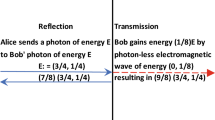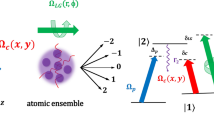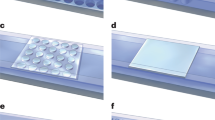Abstract
I WAS very much interested in Sir J. J. Thomson's letter1 in which he suggests that light waves are axially symmetrical systems of electro-magnetic waves propagating along the axis of symmetry, as I made the same suggestion in 19292 and then repeated it in my recent papers in the Philosophical Magazine3 where this kind of Maxwell waves was discussed in detail; on the basis of this discussion a theory of elementary ” material” particles (like electrons and protons) and of the photons was developed, according to which these entities were regarded as certain axially symmetrical systems of Maxwell electro-magnetic waves.
This is a preview of subscription content, access via your institution
Access options
Subscribe to this journal
Receive 51 print issues and online access
$199.00 per year
only $3.90 per issue
Buy this article
- Purchase on SpringerLink
- Instant access to full article PDF
Prices may be subject to local taxes which are calculated during checkout
Similar content being viewed by others
References
NATURE, 137, 232 (Feb. 8, 1936).
Z. Phys., 54, 1 and 2, 121 (1929).
Phil. Mag., 19, 954 (1935); ibid., 20, 441, 646, 695 and 702.
See equation (24) in Z. Phys., loc. cit., from which Sir J. J. Thomson's equation = 0 is obtained as a particular case by equating the constants l = 1 and k = 0.
See formula (27) in Z. Phys., loc. cit., Sir J. J. Thomson's solution is obtained as a particular case by putting l = 1 and k = 0.
The notation used in my paper differs from the notation in Sir J. J. Thomson's letter. His Q,, A and B correspond to my Y, r, C1 and C2C1 respectively.
The solution suitable for free axially symmetrical waves of this kind requires that the radial component of the electro-magnetic vector at = 0 should not only be finite, but also equal to zero (see Z. Phys., loc. cit., 116).
Z. Phys., loc. cit.
Phil. Mag., loc. cit.
Author information
Authors and Affiliations
Rights and permissions
About this article
Cite this article
JAPOLSKY, N. The Structure of Light Waves. Nature 137, 663 (1936). https://doi.org/10.1038/137663b0
Issue date:
DOI: https://doi.org/10.1038/137663b0
This article is cited by
-
Structure of Light Waves
Nature (1936)
-
The Nature of Light
Nature (1936)



